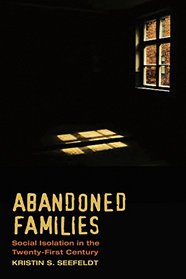Search -
Abandoned Families: Social Isolation in the Twenty-First Century
Abandoned Families Social Isolation in the TwentyFirst Century
Author:
Education, employment, and home ownership have long been considered stepping stones to the middle class. But in Abandoned Families, social policy expert Kristin Seefeldt shows how many working families have access only to a separate but unequal set of poor-quality jobs, low-performing schools, and declining housing markets which offer few chance... more »
Author:
Education, employment, and home ownership have long been considered stepping stones to the middle class. But in Abandoned Families, social policy expert Kristin Seefeldt shows how many working families have access only to a separate but unequal set of poor-quality jobs, low-performing schools, and declining housing markets which offer few chance... more »
ISBN-13: 9780871547835
ISBN-10: 087154783X
Publication Date: 12/25/2016
Pages: 232
Edition: 1
Rating: ?
ISBN-10: 087154783X
Publication Date: 12/25/2016
Pages: 232
Edition: 1
Rating: ?
0 stars, based on 0 rating
Publisher: Russell Sage Foundation
Book Type: Paperback
Members Wishing: 1
Reviews: Amazon | Write a Review
Book Type: Paperback
Members Wishing: 1
Reviews: Amazon | Write a Review
Genres:
- Parenting & Relationships
- Nonfiction >> Current Events >> Poverty
- Nonfiction >> Social Sciences >> Social Work
- Nonfiction >> Social Sciences >> Sociology >> Urban




